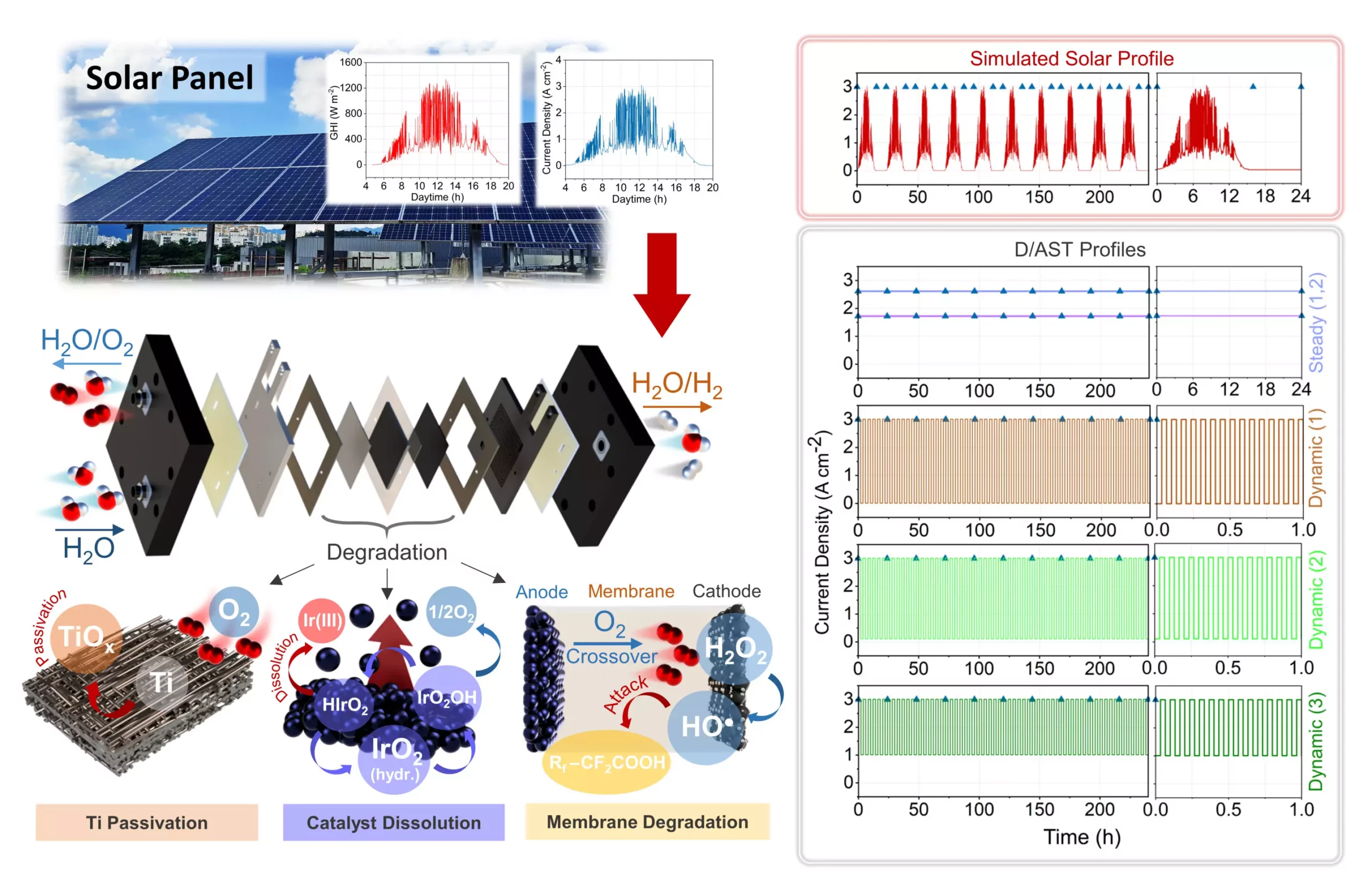The utilization of solar energy in green hydrogen production poses several challenges, one of the main ones being the fluctuations in solar output and generation. Factors such as season and weather can lead to repetitive increases and decreases in power, which in turn can damage the components of production devices. This variability in solar output necessitates a precise evaluation of the durability of devices, in order to determine the optimal timing for component replacement and to develop new materials.
Dr. Bora Seo’s research team from the Hydrogen and Fuel Cell Research Center at the Korea Institute of Science and Technology (KIST) has made significant strides in addressing the issue of durability evaluation for green hydrogen production devices. They have developed a new technique that allows for step durations as short as one second, utilizing actual solar irradiance data. This new method represents the shortest step duration among existing techniques, enabling a more accurate simulation of fluctuations in actual solar energy output.
One of the key components of the research team’s work is the development of key indicators for material development in green hydrogen production devices. Standardized analysis methods for assessing the performance degradation of materials such as catalysts and electrolyte membranes have been proposed. Indicators such as catalyst leaching amount, fluoride release rate, and thickness of passivation layer can help in improving the durability and performance of green hydrogen production devices.
The newly developed durability evaluation technique has the potential to greatly impact the green hydrogen production industry. It can diagnose the precise condition of solar-based production devices and predict their remaining lifespan, allowing for more efficient equipment investment. This technology can also enhance competitiveness in materials and components, by ensuring the development of high-quality, durable products.
Expansion to Other Renewable Energy Sources
While the initial focus of the research has been on utilizing solar energy for green hydrogen production, the developed technique is expected to have applications beyond just solar energy. It can be adapted to assess the performance of green hydrogen production devices based on other renewable energies, such as offshore wind and tidal power. This expansion of the technology’s applicability will further drive the adoption of green hydrogen as a clean energy carrier.
The development of a precise and reliable durability evaluation technique for green hydrogen production devices is crucial for the advancement of the industry. Dr. Bora Seo’s research team has paved the way for more accurate simulations of solar energy fluctuations and advancements in material development. This technology has the potential to revolutionize the green hydrogen production industry and drive the adoption of renewable energy sources for clean energy production.


Leave a Reply